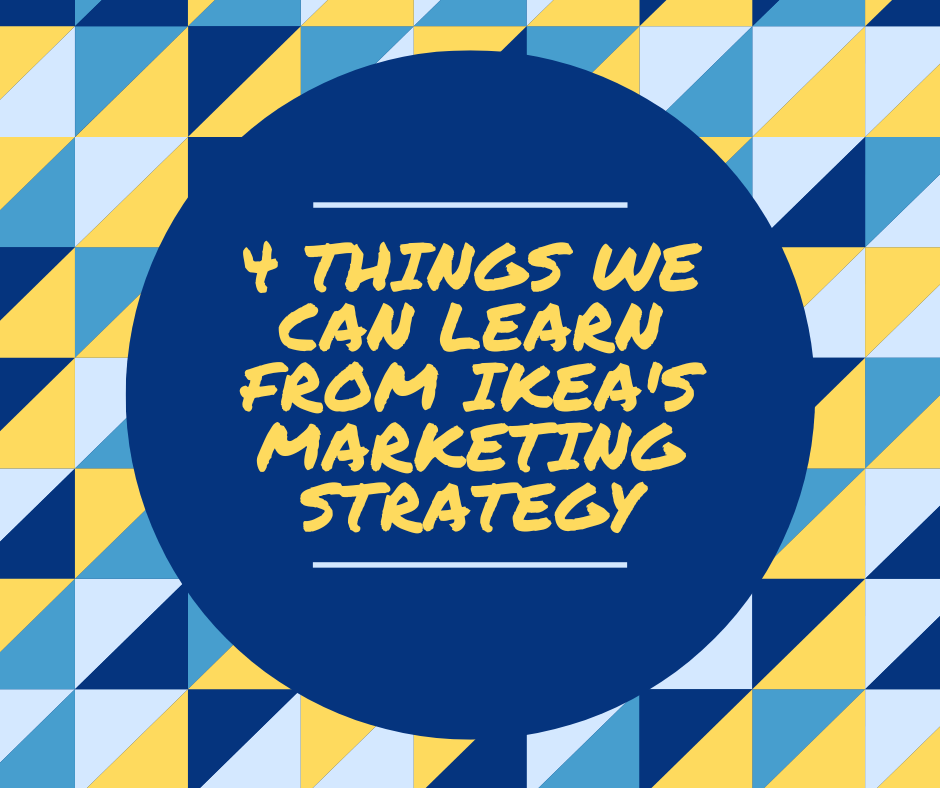IKEA is a furniture retail store that is one of the most widely-recognized brands in the world. IKEA’s success is largely due to their highly effective marketing strategy. Let’s take a look at some of them and find out how we can apply them to our own business.
They Have a Brand
IKEA was established in 1943 by 17-year-old Ingvar Kamprad. Its premise was to provide high-quality furniture that anybody can afford, whether you’re a multimillionaire or a struggling fresh graduate. And since then, IKEA has stuck to its roots—its products are not only budget-friendly but also sustainable. They can last for several years and come with very unremarkable packaging that’s easier on the environment.
Even Ingvar Kamprad upheld IKEA’s values! Despite becoming a billionaire later on in his life, he continued to fly economy class, recycle tea bags, keep salt and pepper bags from restaurants, and buy seasonal items post-season to save money.
Additionally, IKEA is very cognizant of their Swedish background too. Their logo, emblazoned with bright blue and yellow, is reminiscent of the Swedish flag. Many of their restaurant dishes like marinated salmon, Swedish meatballs, and cinnamon buns are all dishes that Swedes would eat in their daily lives. Their furniture pieces are named after Swedish words or phrases. Whenever you hear or see anything remotely-related to Sweden, you’re reminded of IKEA.
Essentially, you want to emulate this by having a brand image for your business too. It’s important to have one because it makes you memorable, setting you apart from your competitors. According to a digital marketing agency in Orange County, brand image is a crucial element of customer retention.
They Have a Great Layout
Have you ever wondered why going inside an IKEA is like being in a maze? It’s because they purposely designed it that way!
IKEA makes the most out of its displays by only having one entrance and one exit per floor. To find whatever you’re looking for, you have no choice but to look at everything else. This makes you more likely to find other interesting items you’d like for your house. You’re already there to buy new pillows, anyway, why not just throw in a duvet cover, bedside drawer, lamp, and a new rug with it too?
Additionally, their showrooms seem to make no lick of sense—instead of having floors of just bedroom items or just kitchen items, they combine everything into one showroom. This gives you an extra push—you’re probably never going to see this product without going through another maze again, so why not just add it to the cart too?
And the cherry on top? After a couple of hours of walking through that incessant maze, arguing over furniture styles with your loved ones, and going gaga over their impeccable displays, you’re bound to be starving. IKEA’s restaurant at the end of the maze will have any customer salivating at the mere thought of Swedish meatballs–what a marketing strategy!
So how can we apply this to our digital marketing strategy?
First, always be one step ahead of your customers. Recommend items you think they’d also like based on what they’re buying.
Second, display your items appropriately. Don’t just put your products on a pedestal and call it a day. Display them like how you’d want your customers to use them by having models wear your clothes or cutting your food open and showing what’s inside.
They Prioritize User-Generated Content
IKEA is notorious for selling furniture that can get pretty difficult to assemble. There are a ton of different bits and bobs that need to be arranged just right for everything to go together. That’s why whenever someone assembles their IKEA product perfectly, they feel super proud of themselves. They’re so proud, in fact, that they are compelled to post their finished product online and brag about it.
Right here is a beautiful example of user-generated content done right. It’s essentially free marketing for IKEA. They sit back on their perfectly-assembled armchairs and watch as their products get tons of visibility on various social media platforms like Facebook, Instagram, TikTok, and YouTube.
In the same way, you should also try to encourage this with your customers. Encourage them to use your products and tag you so you can share them on your social media profiles. Have a designated hashtag so all user-generated content can be accessed in one place. Use user-generated content in future marketing campaigns so people can see how many customers you’ve satisfied!
They Don’t Take Themselves Seriously
The thing about advertisements these days is that not only are they annoying, but they’re also repetitive. It’s just a constant stream of, “My product is the best and most unique thing in the market today, buy this before supplies last!” with flashy graphics and dramatic text. Sometimes, it pays to be chill and lighthearted. Your adverts will be more entertaining that way and will resonate with your customers better.
IKEA’s lightheartedness shines through their advertising and marketing strategy. One notable example is the BookbookTM which is just a regular IKEA catalog. It was marketed in the same style Apple promoted the MacBook Air. This made for a funny advert people still talk about to this day.
Another campaign, IKEA for Aliens, is a humorous take on what aliens would do if they visited Earth for the first time. IKEA decided to translate their manuals into alien-speak, so by the off-chance aliens did visit the Earth, they can readily procure and assemble IKEA furniture for themselves.
With so much seriousness going on in the world today, everybody needs a good laugh. Why not inject a little humor and whimsicality into your marketing strategies?
